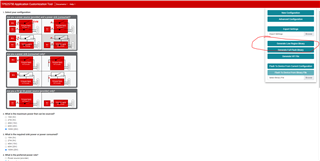Other Parts Discussed in Thread: , TPS25751
I use the linux driver (Linux V6.8) at the following link:
<root>/drivers/usb/typec/tipd
It supports TPS25750.
From the following dmesg log, I think the driver is working. The problem is that there is no firmware file or the firmware file is not in the correct format.
root@rs802-reader:~# dmesg | grep tps
[ 6.969743] tps6598x 1-0021: GPIO lookup for consumer reset
[ 6.969761] tps6598x 1-0021: using device tree for GPIO lookup
[ 6.969813] tps6598x 1-0021: using lookup tables for GPIO lookup
[ 6.969818] tps6598x 1-0021: No GPIO consumer reset found
[ 8.558088] tps6598x 1-0021: tps25750_complete_patch_process: failed device patch complete status: 64
Please tell me which tool to use to create the firmware file?




